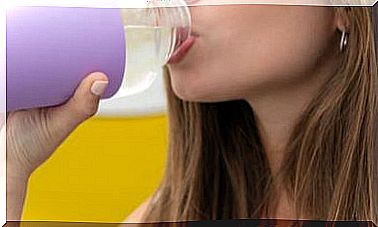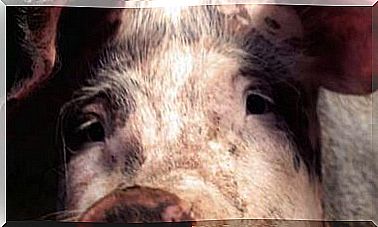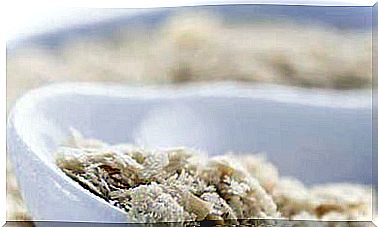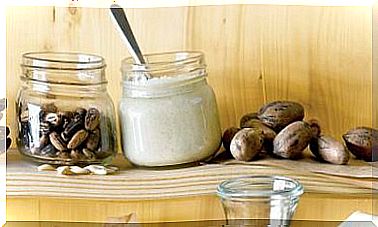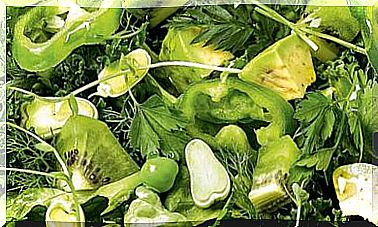How To Prevent And Treat Stroke In Time
Stroke is a stroke that can have very serious consequences. Learning how to prevent it is as important as knowing how to recognize its symptoms and react quickly.

They notify us of an emergency at home. The patient has lost consciousness. When we arrive he recovers it, but he tells us what is happening to him and they are the symptoms of a stroke: one side of his face has become paralyzed and he has lost strength in one arm; It is difficult for him to express himself, understand what is being said and use intelligible language.
You also experience walking difficulties and loss of balance or coordination. You have pain and grogginess, and some visual impairment.
What is a stroke?
Ictus in Latin means “suddenly”, suddenly, a sudden and violent presentation. It was also called stroke or paralysis, and today it is called cerebrovascular accident, although the word that best defines it is still stroke.
The term refers to a sudden interruption of cerebral blood flow, either by ischemia (the occlusion of one of the arteries that supply the brain mass) or by hemorrhage (the rupture of a brain blood vessel).
At first it is not possible to know which of the two is the reason. In 80-85% of cases, stroke is due to thrombi; intracranial hemorrhages are often accompanied by high blood pressure (hypertension) and, in general, headache.
A transfer to the hospital and a CT or MRI scan are often necessary to determine whether it is a thrombus or a hemorrhage, so that prompt treatment can be instituted.
Alarm symptoms: when to seek immediate attention
It is important to seek immediate medical attention whenever symptoms occur. The most common symptoms are:
- unexplained paralysis
- numbness
- sputtering language
- severe headache
- confusion or dizziness
At that time, it is important to identify any risk factor for stroke and establish a good diagnosis, using computed tomography or magnetic resonance imaging.
Once in the hospital, they are monitored for complications. Care is taken that the person breathes well, does not choke or choke, swallows food well, is well nourished, does not get ulcers or sores on the skin, is well communicated and informed, is treated with sensitivity, that their sleep and rest be respected, and that the family is organized to care for them.
At the same time, numerous tests are performed to study blood glucose, kidney function, markers of cardiac ischemia, clotting time, oxygen saturation, and electrocardiograms and electroencephalograms.
Who is most at risk of having a stroke?
Stroke is a major public health problem. According to data from the World Health Organization (WHO), cerebrovascular diseases represent the third cause of death in the Western world, the first cause of physical disability in adults and the second of dementia.
The Spanish Society of Neurology highlights that ” one in ten deaths in Spain is caused by a stroke. It is the second cause of death in our country (the first in women), and its appearance causes more disability and premature deaths than Alzheimer’s and traffic accidents together “.
Non-modifiable risk factors that predispose to stroke include: being over 55 years of age, male, African, American, and Hispanic American, or having a maternal or paternal family history of stroke.
The main modifiable risk factors that predispose to stroke are: hypertension, smoking, diabetes mellitus and hypercholesterinemia, salty diets, obesity, and thrombus-producing heart disease. The contribution of these factors to cerebral arteriosclerosis is well known.
Additional risk factors include: homocysteinemia, high levels of C-reactive protein, high intake of fats and salt in food, lack of fruits and vegetables in the diet, a sedentary lifestyle, and hormone replacement therapy in women.
Today the relationship between hormone therapy and the risk of thrombi and stroke is well documented . So the benefits and risks of menopausal hormone therapy must be weighed.
The same happens with the contraceptive pill after a stroke or if there is a risk of suffering it. In both cases, it is therefore necessary to inform the patient of the risks she runs, so that she can make her own decisions.
Small symptoms that you should not ignore
Many low-intensity, low-duration strokes are known as transient ischemic attacks, because they last less than 24 hours. In fact, most last less than an hour, about 10 minutes.
These transient ischemic attacks usually go unnoticed due to the blandness of their symptoms:
- paresthesia
- weakness of a non-specific muscle group (its activity is supplied by other muscle groups),
- brief amnesic episodes
- small disorientations.
It would not be unreasonable to say that these minor symptoms are the most frequent; They are of great importance because they promptly alert the underlying pathology. And they help to put in place preventive attitudes and avoid other major problems. Neurological symptoms begin to appear about ten seconds after the blood supply is disturbed. Keys to preventing stroke
Two wrinkles that reveal an increased danger of stroke
The risk of stroke increases when the arteries are not in good condition and there are two clues that this problem may be suffering. They are clues that anyone can see by looking in the mirror.
People with deep wrinkles on the forehead, near the eyebrows, may have an above-average risk of dying from a heart or stroke, according to a study on cardiovascular risk by French researcher Yolande Esquirol and her team at the Hospital Center University of Toulouse. The possible explanation is that the atheroma plaques that affect the arteries also stiffen the small blood vessels in the forehead, produce changes in the nearby collagen and promote the formation of wrinkles.
Another clue is a crease or crease that crosses the earlobe at a 45-degree angle. This fold reveals a risk factor that is fully recognized in consultations.
Of course, these wrinkles are not a diagnosis or a condemnation, but they offer you a message: you should take care of your cardiovascular health.
How to prevent stroke
The best stroke treatment is always prevention. It is important to review the diet, prioritizing in general the consumption of fruits, vegetables and legumes, and trying to moderate the intake of fats of animal origin, if you eat them, and the heated ones. Also do physical exercise or other holistic practices that help reduce risk factors.
1. The best diet to prevent strokes
A diet rich in fruits and vegetables is recommended, since an increase of one serving of these foods per day can reduce the risk of stroke of ischemic origin by 6%.
The cruciferous vegetables (broccoli, cauliflower, cabbage, turnips and watercress, etc.), those of green leaves and citrus fruits are the foods that appear to have the maximum beneficial effect.
In general, raw garlic tends to lower blood cholesterol levels, exerts a mild blood-thinning effect, and can relax the smooth muscle in the arteries. One or two cloves of garlic can be crushed a day and added to meals.
In order to prevent or control diabetes, it is recommended to consume foods with a low glycemic index and a low glycemic load, with a high fiber content. This is the case of legumes and whole grains. Eating whole grains has been shown to be associated with a lower risk of stroke in women.
It is advisable to moderate or suppress alcohol consumption, which is a risk factor for hypertension.
It is highly recommended to include healthy fats, especially more omega-3 fatty acids (such as those found in flax and chia seeds, which improve cardiovascular and cerebrovascular health) and more monounsaturated fats (such as olive oil).
It is also important to avoid saturated fats (daily consumption of red meat also increases the risk of stroke), hydrogenated and trans fats.
Make sure of vitamin B12
Although a plant-based diet is highly recommended, people who do not consume animal products should ensure that they obtain vitamin B12 through a weekly supplement. A deficiency of this nutrient can cause an increase in homocysteine in the blood that damages the arteries .
Atherosclerosis is now recognized as a disease characterized by chronic inflammation; therefore, it is advisable to moderate or eliminate pro-inflammatory foods, such as trans fatty acids. This means that you should not eat partially hydrogenated fats like those found in many ultra-processed products, pastries and ice creams.
2. Physical exercise, tai chi or yoga
Regular physical activity is another great factor that lowers the risk of stroke.
The aerobic exercise for 30-45 minutes a day lowers blood pressure, improves lipid profiles, fights insulin resistance and enhances the elasticity of the arteries that supply the brain.
Tai Chi has been shown to improve recovery after a stroke.
Chikung practice has also been shown to decrease hypertension and its related disorders, such as stroke.
The yoga has a long history of improving the vascular and neurological health. Asana practice is highly recommended for both stroke prevention and treatment.
In obese patients, weight loss by combining calorie restriction (with common sense) and an exercise program significantly reduces the risk of stroke.
3. Ginkgo and other aids to improve blood flow
In the field of herbal medicine, it has been shown that one of the properties of ginkgo (Ginkgo biloba) is to protect the brain against hypoxemic injury, so it is worth considering this herbal medicine as a supplement. Likewise, it has been shown to be neuroprotective in healthy adults with an unscathed cognitive state.
Doses range from 120 to 240 mg of ginkgo extract standardized to 6% terpenes and 24% flavone glycosides, in divided doses two or three times a day.
Anticoagulants are often used after an initial stroke : from acetylsalicylic acid alone, to the most powerful anticoagulant, warfarin. The latter constitutes an essential treatment in individuals with atrial fibrillation as primary and secondary prevention of stroke, unless there are contraindications to anticoagulant treatment.
The drugs for the control of hypertension, diabetes and hyperlipidemia (excess blood fats) are selected according to the individual needs of the patient, always ensuring that can be controlled with lifestyle modification.
4. Other preventive measures
On the other hand, therapeutic massage releases tension, helps reduce spasm and is a valuable ally in the treatment of cardiovascular accidents.
You can resort to regular practice of stress-reducing techniques, such as meditation, breathing exercises, and walks in the fresh air. It is also advisable to participate in a social network that encourages a healthy lifestyle.
Life after stroke
Above all, it must be borne in mind that there are always possibilities for rehabilitation and many more if the person is cared for from the first moment.
The possibilities of our brain are still little known; It is surprising that small injuries sometimes produce large defects, while at other times, despite large injuries, spectacular recoveries occur. The key is to start rehabilitation early and not to abandon it.
It is also important to know that everyone can improve. Older people are neglected, as it is thought that due to their age they will not recover, but recoveries are evident in people in both their 50s and 90s. The difference is more in the insistence on recovering.
It is also important to attend to vascular accidents in children; Sometimes they are diagnosed late and badly, and above all their rehabilitation is neglected. You always have to do it soon and well.
It is essential to involve the family and social environment in rehabilitation, as well as to establish an adequate network in all areas. When you leave the hospital, you have to plan very well with the family the care of the person: their rehabilitation, their health education, their meals, their exercise …
The activities in natural environments, such as horseback outdoors, help improve rehabilitation.
You have to think that a stroke can mean a sudden death, but also an opportunity to take care of yourself and improve in life, both individually and in the family.
Acupuncture to improve recovery
Acupuncture appears to be shown to help stroke sufferers maintain independent functioning in their home life. There is also experimental evidence on the possible neuroprotective effect of acupuncture.
A 2016 Cochrane review – one of the best medical evidence databases – on the efficacy of acupuncture for the treatment of acute stroke concluded that “it may have beneficial effects by improving dependency, global neurological deficiency and some specific neurological damage during convalescence of people who have suffered a seizure, with no obvious adverse effects. ” The review consisted of 31 trials involving 2,257 patients.
References:
- Yang A. et al. Acupuncture for stroke rehabilitation. Cochrane.
- Yolande Esquirol et al. Forehead Wrinkles and risk of all-cause and cardiovascular mortality over 20-year follow-up in working population: VISAT study. European Heart Journal.
- Thomas Campbell. A plant-based diet and stroke. Journal of Geriatric Cardiology.

